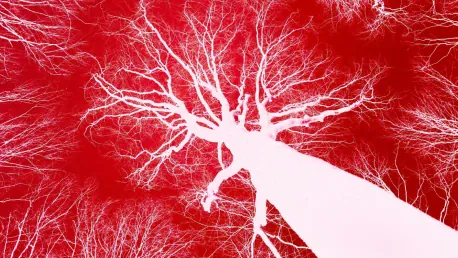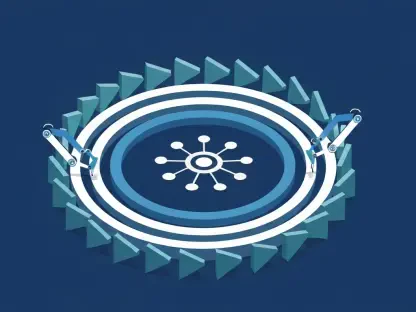Imagine a technology so precise, it could navigate through the tiniest blood vessels, diagnosing complex vascular issues with unparalleled accuracy. The recent breakthrough in magnetic microrobots offers just that, transforming the future of vascular imaging and patient care.
At the forefront of this innovation are researchers from the Shenzhen Institute of Artificial Intelligence and Robotics for Society and the Chinese University of Hong Kong. Their work on magnetic microrobots is set to revolutionize how medical professionals visualize and analyze vascular networks. This technology addresses significant limitations in traditional vascular imaging, offering new hope for more accurate diagnostics and treatment.
The Problem with Current Vascular Imaging Techniques
Traditional angiography, while a cornerstone in vascular imaging, has notable limitations. It relies on contrast agents that travel with the natural blood flow, making it difficult to visualize upstream regions or areas beyond blockages. Such constraints can hinder the diagnosis and treatment of conditions involving narrow vessels, thrombi, and abnormal vascular connections.
These limitations impact patient outcomes and treatment plans significantly. Physicians might miss critical data due to imaging blind spots, complicating the process of devising effective intervention strategies. The inability to fully visualize affected areas can delay accurate diagnosis and appropriate treatment, leading to adverse health outcomes.
A Revolutionary Approach
The research team, spearheaded by Xingzhou Du and Yibin Wang, has introduced an innovative solution utilizing magnetic microrobots. Unlike passive contrast agents, these microrobots are actively navigated by external magnetic fields, allowing them to traverse in any direction, even against blood flow. This capability ensures that they can navigate around obstacles like clots, offering a comprehensive view of the vascular network.
This revolutionary technique offers a distinct advantage over traditional methods. Passive contrast agents are limited to areas where the natural blood flow takes them. In contrast, magnetic microrobots can be directed precisely to any location within the vascular system, providing detailed imaging that was previously unattainable. It’s a game-changer for diagnosing and planning treatments for complex vascular conditions.
Detailed Insights into Magnetic Microrobots
The operation of these microrobots is based on the principles of magnetic field manipulation. By applying external magnetic fields, the microrobots are steered with high precision through blood vessels. An advanced image processing unit tracks their 3D positions, capturing real-time data on the vascular network.
The system employs a simultaneous mapping and exploration sequence. This technology not only allows for microrobots’ navigation but also enables meticulous 3D vascular reconstruction. This simultaneous mapping ensures accurate localization of any blockages or anomalies, which is critical for effective medical intervention.
Experimental Success and Implications
Experimental evaluations have validated the efficacy of this technology. The results showcased detailed 3D vascular reconstructions, regardless of existing obstructions. This innovative approach has demonstrated its ability to uncover vascular regions that traditional methods cannot, offering invaluable insights for diagnosing and treating conditions like stenoses, thrombi, and fistulae.
These successful evaluations underscore the transformative potential of magnetic microrobot swarms. By enabling comprehensive exploration and precise localization of vascular anomalies, this technology promises to redefine diagnostic accuracy and therapeutic planning in vascular medicine.
Real-World Applications and Future Prospects
Experts within the medical community have hailed this technology as a groundbreaking advancement. Dr. Li Zhang, a leading scientist in the field, notes, “The capability of magnetic microrobots to navigate and map complex vascular networks opens new horizons in diagnostic imaging.”
Anecdotes from case studies provide further testament to its success. For instance, in a recent trial, a swarm of microrobots successfully navigated through a patient’s complex vascular structure, uncovering a previously undiagnosed thrombus. Such real-world applications highlight the technology’s potential in clinical settings.
Future prospects include extensive clinical testing and validation. As magnetic microrobots gain traction, the emphasis will be on ensuring their safety and efficacy across varied clinical environments, setting the stage for integration into routine medical practice.
Strategies for Integration into Clinical Practice
Adopting microrobot swarm technology in healthcare settings will require robust frameworks. Implementing training programs for healthcare professionals, upgrading imaging infrastructure, and establishing standardized protocols are essential steps toward integration.
Healthcare facilities must prepare by investing in the necessary technological infrastructure and training. Ensuring that practitioners are equipped to operate and interpret the data provided by microrobots is vital for successful adoption.
The anticipated benefits for patient care are substantial. Enhanced imaging capabilities can lead to more accurate and timely diagnoses, ultimately improving patient outcomes. For example, early detection of blood clots can prevent potentially life-threatening conditions, showcasing the profound implications of this technology in proactive healthcare.
To summarize, magnetic microrobots represent a revolutionary leap in 3D vascular imaging. Their ability to navigate and map intricate vascular networks marks a significant advancement over traditional methods. While challenges in integration remain, the potential benefits for enhanced diagnostics and patient care are unsurpassed. The future of vascular imaging and treatment looks promising, driven by the innovative use of magnetic microrobot swarms in medical practice.









